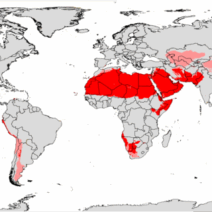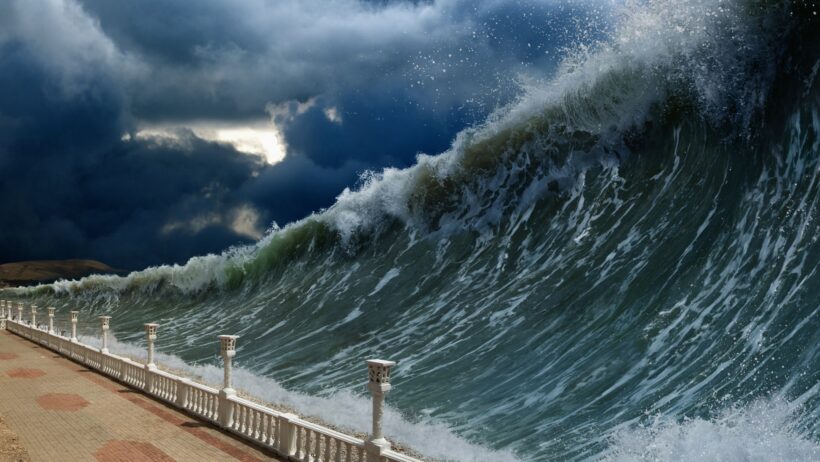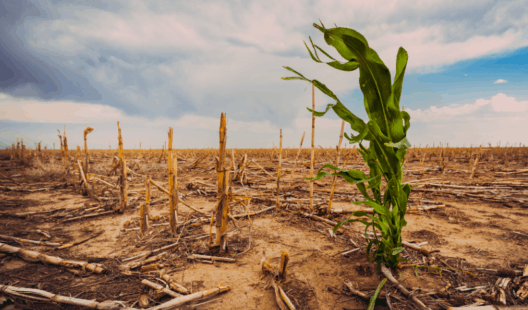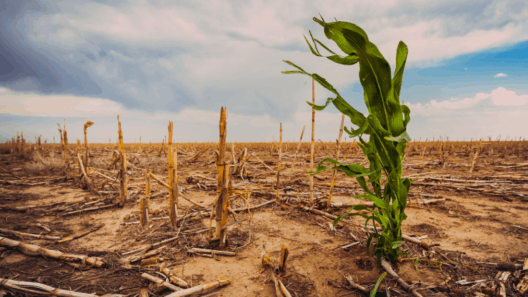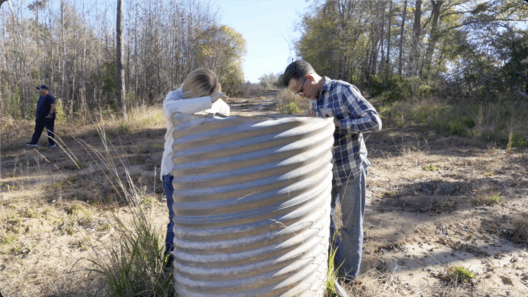In recent years, the discourse surrounding tsunamis has not only focused on their immediate devastation but has also begun to explore broader connections with environmental phenomena, particularly climate change. While tsunamis are traditionally associated with seismic events, an intricate tapestry of interactions exists between global warming and oceanic behaviors that can indirectly shape conditions conducive to tsunami generation.
Tsunamis, characterized by their colossal waves and devastating impact, are primarily instigated by geological disturbances such as underwater earthquakes, volcanic eruptions, or landslides. As a result, the initial assumption might be that climate change plays no role in these seismic occurrences. However, the underlying dynamics of our planet’s climate system reveal a more complex relationship. For instance, the melting of polar ice caps and glaciers raises sea levels, increasing the vulnerability of coastal areas to tsunami waves. While sea-level rise does not directly cause tsunamis, it exacerbates their impact, leading to catastrophic consequences for coastal populations.
Moreover, the phenomenon of climate change has been linked to increased seismic activity in some research studies. The redistribution of water mass from melting ice can lead to changes in pressure on tectonic plates. This redistribution might induce seismic events in areas not previously considered geologically active. The interplay between human-induced climate changes and the Earth’s geological activity suggests that global warming may gradually augment the frequency or intensity of seismic disturbances that can generate tsunamis.
Additionally, while the primary concern regarding climate change pertains to gradual shifts in weather patterns and sea levels, it is imperative to consider the role of extreme weather events. Climate change is already manifesting in the form of more intense storms, hurricanes, and variations in ocean temperatures. Such phenomena can lead to increased underwater landslides or other geological shifts that could instigate tsunami-like waves. The correlation between storm activity and subsequent tsunamis is a crucial consideration in assessing how contemporary warming trends influence these cataclysmic waves.
Exploring the potential for tsunamis to be influenced by climate change not only raises questions about their direct relationships but also highlights societal preparedness. The growing recognition that tsunamis can be exacerbated by rising sea levels and increased flooding necessitates a reevaluation of coastal defenses and early warning systems. Communities situated in low-lying coastal zones, particularly those that have already been afflicted by climate change-related events, must adopt a fortified stance against these natural disasters.
Furthermore, scientific research into oceanic and seismic phenomena is paramount in developing a comprehensive understanding of these interactions. As the ocean evolves due to temperature variations and changing salinity levels, monitoring these changes is crucial for predicting potential tsunami-generating events. Improved modeling techniques and data analytics can facilitate a more accurate assessment of risks, allowing communities to prepare effectively for these natural catastrophes.
In addition to the scientific aspects, public awareness and education form the backbone of societal resilience against tsunamis. There exists a paradox in the public’s understanding of tsunamis that intertwines fascination and fear. On one hand, these colossal waves captivate the imagination; on the other, they represent a formidable threat. Harnessing this fascination can be instrumental in driving home the importance of preparedness and climate action. Educational campaigns that illuminate the connections between climate change and tsunami risks can bolster community involvement and foster a culture of proactive engagement.
The global response to climate change has become a pressing priority, with implications stretching far beyond the immediate effects of rising temperatures and shifting weather patterns. The potential for altered seismic behavior and increased tsunami risk should be woven into broader climate strategies. This requires interdisciplinary approaches, merging geological sciences with climate research and disaster preparedness planning.
In conclusion, while tsunamis are fundamentally geological phenomena, the implications of climate change warrant rigorous investigation. The intricate and multifaceted relationship between global warming and tsunami generation is a testament to our planet’s interconnected systems. As we navigate the challenges posed by climate change, acknowledging these connections can enhance our preparedness and resilience in the face of potential disasters.
Ultimately, the intersection of climate change and tsunami activity embodies a larger narrative of environmental stewardship. A commitment to understanding and addressing these concerns is vital in safeguarding vulnerable communities against future calamities. In a world fundamentally shaped by human activity, it is imperative that we adopt a holistic perspective, recognizing that the actions we take today will reverberate through our environmental future. Awareness and proactive measures can mitigate risks, ensuring we remain prepared for the forces of nature, however they may manifest.


